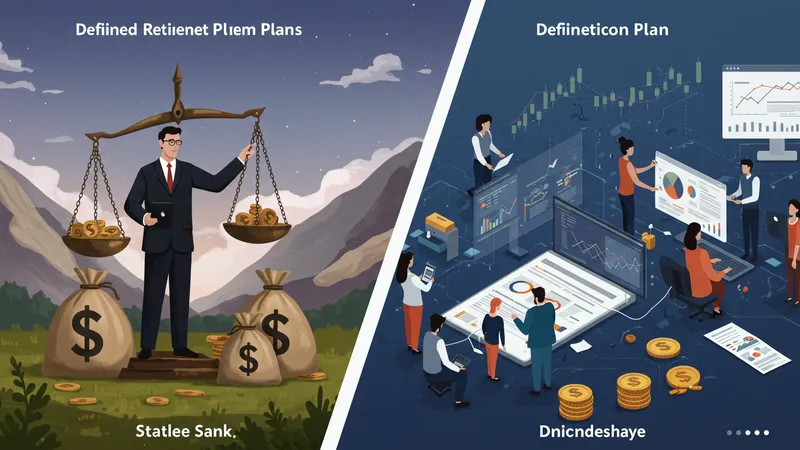

Understanding retirement pension systems is essential for every professional aiming to secure long-term financial stability after their working years. These systems are structured programs, typically established by employers, governments, or private providers, to help individuals accumulate income for retirement. They involve regular contributions, sometimes matched by employers, and offer payouts based on factors such as years of service or salary history. Professionals who grasp the workings of these pension systems can make informed decisions regarding their future and ensure smoother transitions from employment to retirement.
Retirement pension systems come in different forms, often categorized as defined benefit plans, defined contribution plans, or hybrid models. Defined benefit plans guarantee a specific payout upon retirement, usually determined by tenure and salary. Defined contribution plans rely on individual and employer contributions, with investment performance affecting the final balance. Knowing the mechanics and differences between these systems can help professionals maximize their retirement benefits, plan their finances more effectively, and avoid common pitfalls.

Each pension system type carries unique advantages and considerations. Defined benefit plans are often seen in public sector or legacy private organizations and provide predictable retirement income, but they may offer less flexibility if you change employers frequently. Defined contribution plans, prevalent in many modern workplaces, allow more control and portability, giving professionals options to manage investments according to their risk appetite. Hybrid schemes are gaining traction for blending security and flexibility.
A significant insight for professionals is that employer pension offerings are only one piece of the broader retirement strategy. Supplementing these systems with personal savings or voluntary contribution plans can strengthen financial well-being in the later years. For example, additional retirement savings vehicles, such as individual retirement accounts or annuities, can act as safety nets if employer plans fall short.
Another crucial factor is understanding vesting periods and portability. Some plans require a minimum tenure of service to access full benefits; leaving an organization prematurely can reduce or forfeit entitlements. Professionals who switch employers often should carefully review plan specifics to avoid losing accumulated benefits or missing out on maximum payouts.
Fees, charges, and taxation are key components to watch. Pension plans often involve administrative or management fees, and withdrawal rules vary by region. Understanding how contributions, investment growth, and distributions are taxed prevents unpleasant surprises and helps professionals keep more of their earned retirement income.
Mastering the essentials of retirement pension systems is not just about passive participation; it’s about leveraging knowledge for optimal long-term security. While these systems promise peace of mind, the deeper details reveal even more valuable insights ahead—both in choosing the right type and maximizing every advantage available.
The most common pension system structure is the defined benefit plan, popularized by many legacy employers. In this setup, participants receive a guaranteed monthly payment at retirement, typically calculated using a set formula involving years of service and salary average. The employer bears the investment risk, and the payout remains stable regardless of market fluctuations. This approach is highly valued for its predictability, especially by professionals expecting long tenures with a single organization.

Defined contribution plans, on the other hand, have overtaken many traditional pensions due to their portability and flexibility. In these arrangements, both professionals and employers contribute set amounts into retirement accounts, which are then invested in mutual funds or other vehicles. The eventual retirement amount depends on total contributions and investment performance. While these plans come with more personal control, they also shift investment risk to the individual, making education and periodic reviews essential.
Hybrid pension designs are increasingly prominent, combining aspects of both major models. For example, cash balance plans offer a “deferred return” formula with individual accounts and a guaranteed minimum interest credit. These plans are often introduced as a middle ground to balance employer sustainability and employee security. Professionals should investigate if their organization provides such schemes and how accruals and payouts compare to more traditional options.
Pension plan features can also differ on ancillary benefits—such as survivor options, early retirement clauses, or disability coverage. These elements may significantly enhance the value or versatility of a professional’s retirement income. Awareness and selection of these features can fine-tune retirement planning, ensuring that the system chosen matches one’s career and life goals as closely as possible. The next section will explore how contributions and management choices impact retirement outcomes further.
A detailed understanding of contribution structures is fundamental for professionals navigating retirement pension systems. Defined contribution plans often allow elective salary deferrals, employer matches, or profit-sharing contributions. The limits on annual contributions are regulated to encourage consistent saving while preventing over-concentration. Knowing these thresholds can help professionals maximize their tax-advantaged investment each year.

Vesting schedules determine when professionals truly “own” the employer-contributed portion of their retirement benefits. Some systems provide immediate vesting, while others require several years of service. Failing to meet these requirements due to early job changes can result in the loss of significant potential funds. Professionals should always confirm vesting timelines before making career moves or considering withdrawals.
Portability has become increasingly relevant in modern workplaces, where career mobility is common. Portable retirement accounts, such as 401(k)-style plans, are typically easy to roll over between employers or into individual accounts, minimizing the risk of lost pension wealth. In contrast, many traditional defined benefit schemes have stricter rules or complexities about transferring credits.
For multi-national or freelance professionals, retirement planning can become even more complex. International pension arrangements, social security agreements, and cross-border transferability add layers of rules and potential value—or risk. Professionals in these situations should seek tailored advice and review specific international pension arrangements to maximize long-term security. Transitioning forward, the next page will focus on plan management, investment options, and risk considerations.
The selection and management of pension investments are key aspects influencing the ultimate value of retirement outcomes. In defined contribution schemes, professionals must choose how their funds are allocated across various assets—such as equities, bonds, and stable value funds. Understanding risk tolerance, time horizon, and historical returns helps structure a balanced portfolio tailored to future needs.

Automatic enrollment, default investment options, and rebalancing services are important plan features. These functions guide professionals who may lack investment knowledge and ensure that funds are invested appropriately over time. Some pension systems also offer target-date funds, automatically adjusting the allocation to become more conservative as retirement approaches. Awareness of these tools allows participants to make deliberate and informed choices.
Professionals in defined benefit systems have less control over investment decisions but still benefit from monitoring the funding status and health of their plan providers. Healthy plans with sufficient assets are far more likely to fulfill future promises. Reviewing annual plan statements and understanding key indicators—like funded ratios or projected payouts—can provide early warning signs that invite further inquiry or personal savings adjustments.
Fees and administrative expenses are often overlooked yet can quietly erode a sizable portion of retirement wealth. Comparing plan fee schedules, especially for managed funds or advisory services, enables professionals to select low-cost providers when possible and ensure that investment growth isn’t unduly siphoned off by charges over decades. The page ahead will discuss the importance of pension system regulation, transparency, and evolving trends every professional should track.
Governments and regulatory bodies play a crucial role in safeguarding the interests of pension participants. Regulations typically set minimum standards for funding, disclosure, governance, and benefit protections. Professionals should familiarize themselves with these frameworks, as well as with reporting requirements that ensure pension plans remain solvent and accountable. This knowledge can help in evaluating the integrity and reliability of employer-offered pensions.

Transparency in pension system reporting is essential for building trust and promoting sound retirement planning. Detailed annual reports, clear benefit statements, and open access to plan rules empower professionals to track their projected entitlements and spot trends or changes early. This level of oversight also supports informed advocacy, should plan participants need to address concerns with employers or authorities.
Recent trends are reshaping the landscape of retirement pension systems worldwide. Greater emphasis on individual responsibility, the emergence of digital advisors, and the shift toward flexible benefit designs are all influencing how professionals plan for retirement. Staying abreast of these changes ensures that individuals do not miss out on innovative features or updated best practices, especially as technology transforms both saving and disbursement options.
Ultimately, the long-term success of any retirement plan rests on an ongoing commitment to learning and monitoring pension system developments. With each innovation, regulatory tweak, or employer update, professionals have new chances to refine their retirement strategies. Mastering both the fundamentals and advanced considerations of pension systems offers professionals the best route to a secure and rewarding post-career life.